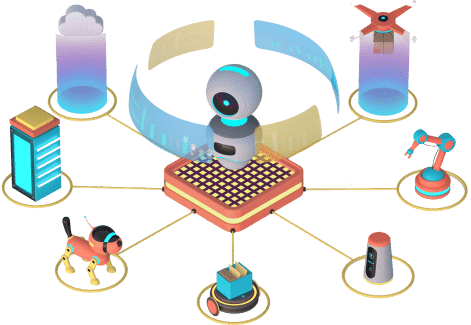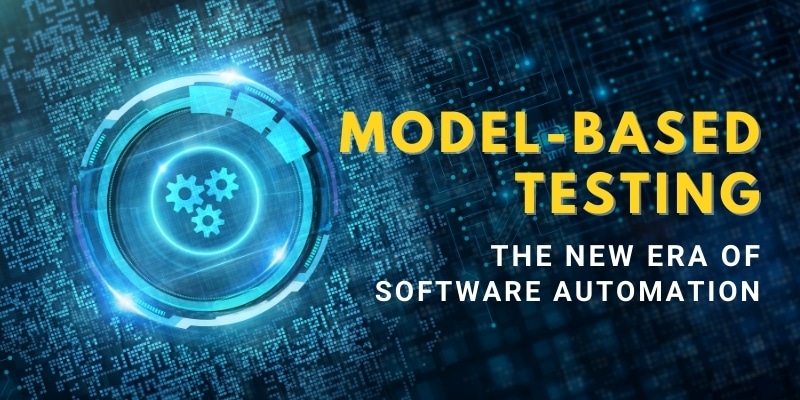Introduction
The technology always has to change its course in order to keep up with the modern-day work culture and the way it should be dealt with to keep all the key features intact so that it can never be outdated. The same point of view is applied when it comes to the requirement specifications capturing, coverage of each thick and thin aspect, analysis, and developing the end product.
Welcome to the era of model-based testing (MBT), an approach that is so strategic that fastens the test automation specifically when we are reengineering the requirement models.
Testing for mobile apps always needs test automation and it can never be compromised because it is an environment of ever-changing requirements. Having said that, you always focus on straightening and streamlining the workflows by using present-day advanced development platforms, and obviously it is always a challenge to update and maintain test cases for such environments.
Let me share an interesting point with you. In 2019, Capgemini published a report on Continuous Testing where almost half of the total people said that they do not have any automated way for the requirement analysis or requirement gathering which clearly shows that in most of the places, testing was not included in the starting phases of SDLC which is later resulted in filtering the requirement specifications and it also costs extra time and money.
Such an amount of time is impossible to be spent in a DevOps environment, but MBT enables its users to capture more testing within a minimum amount of test cases and keeping them updated whenever the process is transforming.
How it actually works?
Model–Based testing or MBT in simpler words is a test automation methodology for providing a descriptive account of test planning, execution and maintenance of test cases, and delivery of quality testing. It ensures the existence to track the bridge within the models, codes, final requirements, and test cases towards the entitled system.
These models are further utilized to produce the test cases and they also elaborate that how are we expecting our module to act under the test environment.

It works as follows:
a. Your design/make a model ensures how the required system or module will behave or should behave.
b. There are several MBT tools available like Modbat or MBT that are used to describe the above-mentioned behavior that will help in producing testing scripts manually.
c. MBT generates the test scripts for test automation.
Creating a model is an important part of SDLC, unlike developing independent test scripts. The whole team focuses on creating one such product that is testable as per the expectations from the real-time user requirement and experience.
From the very initial phases, MBT has to be the vital part of the product design so that the productive time from the development team and the testing team can be invested properly on the finalized models, and from the very beginning, one such product can be developed that is streamlined to test and the also the maintenance efforts can also be reduced to generate and automate more tests using divergent algorithms.
MBT also enables the users to integrate with the popular testing tools and framework used for automation and helps the users to provide the platform to design the test scripts both automatically and manually to expand the coverage.
Also, Read – Is Artificial Intelligence Development Expensive?
Let’s start with MBT
Implementing the MBT to the whole business process flows at once is not viable so it is always introduced systematically step by step. For example, in the beginning, the classic cases imply creating and designing the test cases manually under which the requirement change has a key effect and unpredictable impact on results.
The journey starts with creating the test model. It can be designed by a developer, QA, or the business analyst as well and it can enfold any stage of requirements from a business point of view to end-user and can also link each one with another.
Once you finalize the model; you can not only generate the test cases within no time but can also update them if any new change has been required in the original model. The tools used in MBT will also help you in categorizing the test scenarios that have been introduced and the test scenarios that have been deprecated because of the new changes in the system.
The other significant feature of MBT is the test refinement for the wide range using minimum tests. Compared to manual testing, MBT is more efficient and covers the maximum area, and is more accurate. In order to automate and update the test models, MBT maintains the complete tracking of tests and requirements parallelly.
The further stage to implement MBT is to link the models and the test automation engines to produce the test scripts that will reduce the time for automating tests and will also maintain the scripts easily whenever the new changes will be introduced in the same model.
Finally, when you generate the tests or automated tests via designed models, you can integrate the same with the Continuous Integration tools and processes and in such a manner that MBT can achieve its complete potential.
MBT can be additionally upgraded to a dynamic commutable structure by using machine learning and data analytics which will have the capability to predict the test structures, presume the defects, and will evaluate the risk factors.
The Obstacles and Limitations
Apart from being a cost-friendly and beneficial approach for large scale businesses, it can always be a challenge to instigate this methodology to such an organization that has been long settled.
The business body has to move entirely to modeling from its traditional ways of development and testing fashions. Model-Based culture has to be the prime factor for the workflow buildout which will escort the changes to the groundwork.
Another challenge can be the selection of MBT tools since a variety of such is available in the market today. It has to be capable to provide a wide scalable test occupancy and capable of creating and covering complex model structures. To finalize one such tool that meets the mentioned requirements can be a bit time taking the task, but the business is going to achieve cost-efficient and well-maintained test results once it is carried out and finalized.
Apart from that, the only challenge left at the developer and tester part is that developers need to develop such a product that is testable as per the coding paradigms and has to supplement the test skills and testers need to have full embracement and control of the proper handling of the tool. Once these challenges are settled, the methodology softens the traditional obstacles that the key players like developers, analysts, and testers have always scuffle to reform.
Conclusion
In the upcoming time, the MBT and the action-driven development will be the paramount fashion in testing according to many tech forums. Such technology-centered trends will enhance the bridge between the Business Analysis teams, developers, and the QA teams and will also change the panorama for the dynamic requirements and the prospect to achieve uninterrupted delivery.
A stupendous amount of time and money will be saved to business by MBT with the help of machine learning that has been energized by AI testing and the peak limit of test automation. In the end, MBT is nothing else but a logical and instinctive evolution of test automation.

AI Consulting Services
Planning to Leverage AI for your business? We provide AI Consulting to help organization implement this technology. Connect with our team to learn more.


This is a great post, as always. I am so enjoying this blog. You are the best!
This is nice information at has also complete Software Automation points and it provides some new ideas to do something new.
Thanks for sharing.
A lot of information about “HOW IT IS MBT”, but very little or nothing with what “it IS.” It is not tangible, I do not see examples. I keep imagining the MBT.
Greetings great work, perhaps it is my little knowledge on the subject.